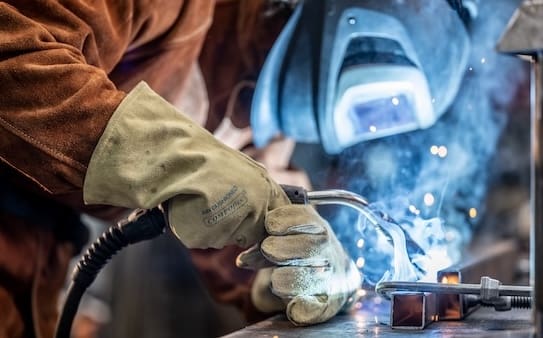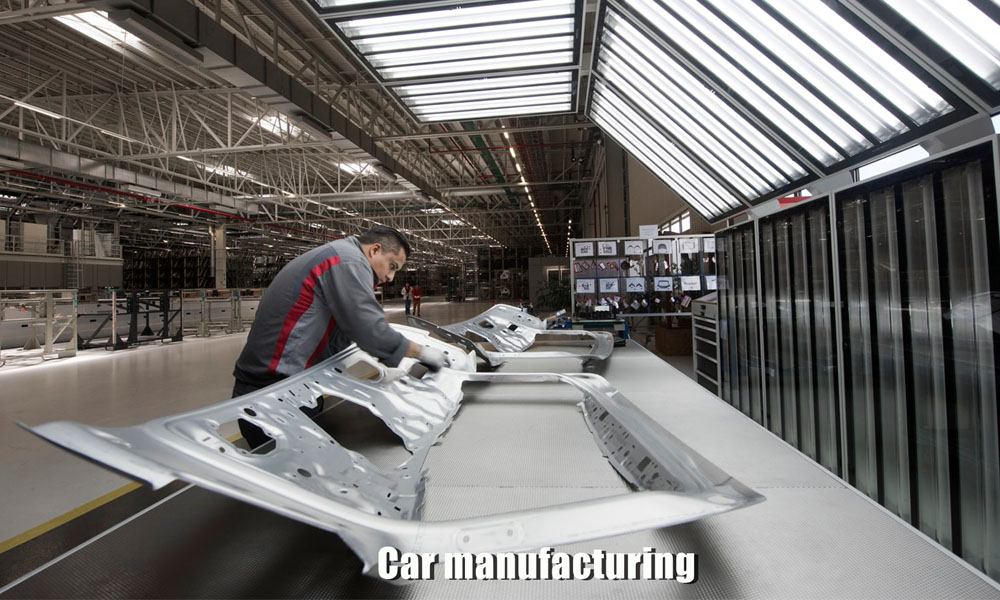Common Welding Fixing Issues and Exactly How to Address Them Properly
Welding repair work usually experience a variety of concerns that can endanger the stability of the final product. Common troubles consist of poor penetration, porosity, and misalignment, to name a few. Each defect provides distinct challenges that need particular techniques for resolution. Recognizing these concerns is necessary for welders intending to improve their end results and skills. This discussion will explore these common welding repair service concerns and efficient techniques to address them.
Poor Penetration
Inadequate infiltration happens when the weld steel falls short to fully fuse with the base material, causing weak joints and possible structural failures. This problem typically comes from inadequate warmth input, incorrect electrode angle, or improper welding speed. Welders may experience inadequate penetration because of a miscalculation of the needed specifications for a details product thickness or type. Furthermore, contamination on the base material's surface can prevent efficient bonding, worsening the problem. To deal with inadequate penetration, welders ought to guarantee suitable settings on their tools and maintain a clean job surface. Regular inspection of welds is advised to identify any shortages early, permitting timely adjustments and the prevention of jeopardized architectural stability in bonded assemblies.
Porosity
Porosity is a typical problem in welded joints that shows up as tiny gas bubbles trapped within the weld steel. This defect can compromise the stability of the weld, causing decreased toughness and possible failing under tension. Montana Mobile Welding and Repair Belgrade. Porosity usually arises from contamination, wetness, or inappropriate welding strategies, which permit gases to leave into the molten weld swimming pool. To attend to porosity, welders need to guarantee correct surface area prep work, keep a tidy working environment, and use appropriate welding specifications. In addition, selecting the ideal filler material and protecting gas can reduce gas entrapment. Routine inspection and testing of welds can assist recognize porosity early, ensuring prompt rehabilitative actions are taken, therefore protecting the high quality and integrity of the welded structure
Misalignment
Misalignment in welding can occur from different factors, including inappropriate arrangement and thermal development. Recognizing the origin is important for reliable resolution. A number of correction methods are available to straighten elements and guarantee architectural honesty.
Reasons for Misalignment
Welding misalignment commonly stems from a selection of underlying concerns that can compromise structural stability. One primary reason is incorrect fit-up of elements before welding, which can bring about voids and uneven surface areas. Variants in thermal expansion during the welding procedure can also lead to distortion, specifically if the materials being signed up with have various coefficients of expansion. In addition, poor securing and fixturing may fail to hold parts safely in location, resulting in motion during welding. Inadequately kept tools, consisting of welding makers and tools, may introduce disparities in the weld bead, additional adding to imbalance. Ultimately, operator error, coming from insufficient training or experience, can likewise play a significant role in developing misaligned welds.
Modification Techniques Readily Available
Dealing with misalignment successfully needs a mix of corrective methods customized to the specific problems at hand. One common approach is making use of jigs or fixtures to hold components in the appropriate position throughout welding, guaranteeing consistent positioning. Furthermore, preheating the materials can help in reducing distortion and enhance fit-up. For considerable imbalance, mechanical adjustment strategies, such as using hydraulic jacks or clamps, can be used to correct the position prior to welding. Post-weld warmth treatment may likewise be essential to relieve stress and anxieties brought on by misalignment. Lastly, mindful inspection and modification throughout the arrangement stage can protect against misalignment problems from becoming significant troubles, promoting a smoother welding procedure and enhancing general structural stability.
Distortion
Distortion is a typical obstacle in welding that can emerge from different factors, consisting of irregular heating & cooling. Understanding the reasons for distortion is necessary for implementing effective prevention strategies. Resolving this problem not just boosts structural stability yet also improves the total top quality of the weld.
Sources of Distortion
When based on the extreme heat of welding, materials frequently undertake adjustments that can result in distortion. This phenomenon largely emerges from thermal expansion and contraction during the welding procedure. As the weld area warms up, the product increases; upon air conditioning, it gets, which can develop internal stress and anxieties. On top of that, unequal heating throughout a work surface can exacerbate these stresses, causing bending or bending. The kind of product also plays a substantial role; metals with varying thermal conductivity and coefficients of development may respond in different ways, causing unpredictable distortions. Additionally, poor joint layout and poor fixturing can contribute to imbalance during welding, increasing the likelihood of distortion. Understanding these reasons is essential for reliable welding repair and prevention approaches.
Avoidance Techniques
Reliable prevention techniques for distortion throughout welding emphasis on managing warmth input and guaranteeing proper joint try this website style. Keeping a regular heat input assists to lessen thermal development and tightening, which can result in distortion. Utilizing techniques such as preheating the workpiece can additionally decrease the temperature level slope, advertising uniform heating. Furthermore, picking appropriate joint layouts, such as T-joints or lap joints, can boost stability and lower stress and anxiety focus. Carrying out correct fixturing to safeguard the workpieces in position additionally aids in keeping placement during the welding process. Staggered welding series can disperse heat a lot more evenly, avoiding local distortion. By using these methods, welders can considerably reduce the probability of distortion and boost the overall top quality of their welds.
Fracturing
Breaking is an usual issue come across in welding repair services, frequently resulting from numerous aspects such as incorrect air conditioning prices, product selection, or inadequate joint prep work. The occurrence of cracks can substantially compromise the stability of the weld, causing prospective failures throughout operation. To resolve this issue, welders must initially assess the origin, guaranteeing that materials work and appropriately chosen for the certain application. Furthermore, regulating the air conditioning rate during the welding procedure is important; fast cooling can induce tension and lead to breaking. Appropriate joint style and prep work additionally add to reducing the danger. Applying these methods can boost weld quality and resilience, ultimately reducing the probability of breaking in completed weldments.

Incomplete Combination
A considerable concern in welding fixings is insufficient fusion, which happens when the weld metal does not effectively bond with the base product or previous weld passes - Montana Mobile Welding Your Domain Name and Repair Welding. This flaw can bring about weak points in the joint, potentially compromising the integrity of the bonded framework. Aspects contributing to incomplete blend include insufficient heat input, improper welding technique, and contamination of the surfaces being joined. To resolve this issue successfully, welders need to assure proper pre-weld cleansing and surface area preparation, in addition to change their welding specifications to accomplish sufficient infiltration and fusion. Regular evaluation throughout the welding process can also assist identify incomplete blend early, enabling timely restorative procedures to boost the general high quality of the weld
Overheating
While welding repair work can enhance architectural honesty, overheating presents a significant challenge that can result in material deterioration. Too much warmth during welding can modify the mechanical residential properties of metals, leading to minimized strength, enhanced brittleness, and bending. This sensation is specifically vital in high-stress applications where structural dependability is extremely important. Determining getting too hot can involve visual evaluations for discoloration or distortion, along with keeping an eye on temperature during the welding procedure. To mitigate the threats related to overheating, welders need to employ ideal strategies, such as controlling warmth input, adjusting traveling rate, and using appropriate filler materials. In addition, implementing pre- and post-weld warmth treatments can aid bring back product homes and enhance the total high quality of the repair, making certain long-lasting efficiency and security.
Frequently Asked Concerns
What Are the Usual Indications of a Welding Flaw?

Just How Can I Test My Welds for High quality?
To check welds for top quality, More hints one can make use of visual assessments, ultrasonic screening, and radiographic approaches. Each technique assures architectural honesty, identifies issues, and confirms adherence to specified standards, inevitably enhancing the dependability of the bonded joints.
What Safety Preventative Measures Should I Take While Welding?
When welding, one ought to focus on safety and security by putting on proper personal protective equipment, making certain proper ventilation, safeguarding flammable materials away, maintaining a clean work area, and understanding environments to avoid injuries and mishaps.
Can I Repair a Weld Without Redesigning the Entire Joint?
Repairing a weld without remodeling the entire joint is possible, depending upon the damage (Welding). Techniques such as grinding, adding filler material, or making use of a welding procedure can properly deal with particular flaws while preserving the bordering framework
What Tools Are Important for Effective Welding Repair Works?
Crucial tools for reliable welding repairs include a welding equipment, cord brush, mill, protective gear, clamps, and filler materials. Each device plays an important duty in making certain high quality and safety and security throughout the repair procedure. Porosity generally develops from contamination, dampness, or incorrect welding techniques, which allow gases to escape into the molten weld pool. Badly kept equipment, including welding makers and tools, may present incongruities in the weld grain, further contributing to imbalance. When subjected to the extreme warmth of welding, products commonly undertake modifications that can lead to distortion. Cracking is an usual concern run into in welding repairs, usually resulting from numerous aspects such as incorrect cooling rates, product choice, or inadequate joint prep work. A considerable problem in welding fixings is incomplete combination, which happens when the weld metal does not properly bond with the base product or previous weld passes.